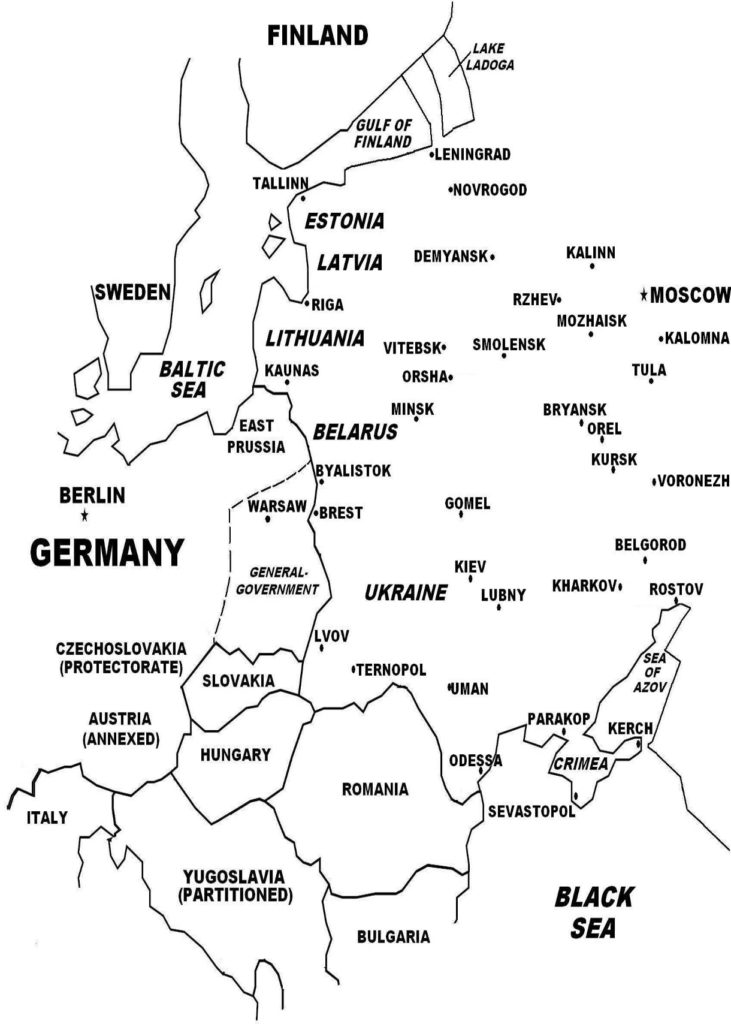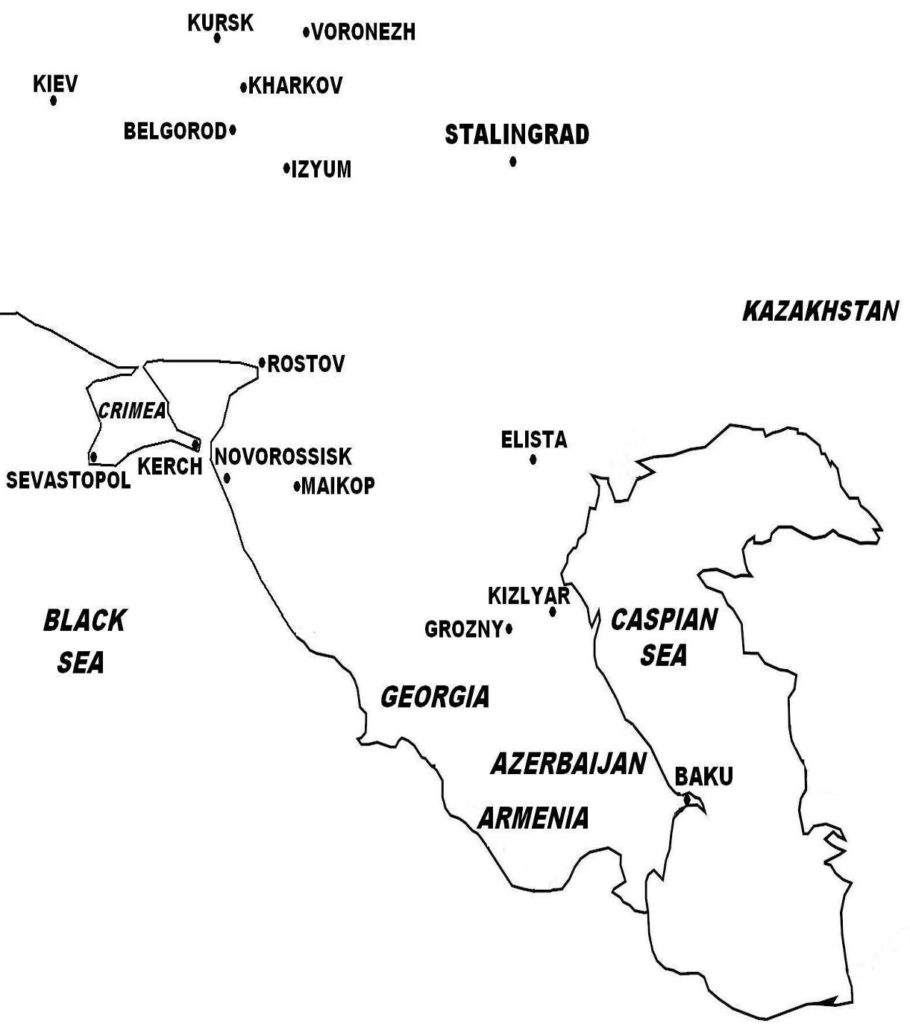On June 28, 1942, German forces and their Axis allies launched their strategic summer offensive into southern Russia aimed at seizing control of the petroleum-rich region of the Caucasus. Operation Barbarossa of the previous year had considerably used up Germany’s oil reserves, and in late 1941, Romania, which supplied 75% of German oil needs, had warned that its oil fields might not be sufficient to continue supplying Germany’s ever-increasing requirements.

(Excerpts taken from Wars of the 20th Century: Volume 6 – World War II in Europe)
Preparations In February 1942, Hitler ordered his military high command to begin preparing for a new offensive with a less ambitious objective (than Operation Barbarossa), the capture of the Caucasus. These preparations gave rise to “Case Blue” (German: Fall Blau), the operational codename for Fuhrer Directive no. 41, issued on April 5, 1941, where Hitler laid out the plan for the German Army’s 1942 summer offensive in Russia, as follows: Army Group South would advance to the Caucasus, this operation being Case Blue’s main objective; Army Group North would capture Leningrad; and Army Group Center would take a defensive posture and hold its present position. The Directive also acknowledged that because of limited resources, only one objective would be pursued at a time; thus, the attack on the Caucasus will be launched first.
By this time, Hitler wanted to acquire the petroleum-rich region of the Caucasus, since Operation Barbarossa of the previous year had considerably used up Germany’s oil reserves, and in late 1941, Romania, which supplied 75% of German oil needs, had warned that its oil fields might not be sufficient to continue supplying Germany’s ever-increasing requirements. The German capture of the Caucasian oil fields, particularly Baku (in Azerbaijan), which provided 80% of the Soviet Union’s oil needs, would be devastating to Soviet industry and military. Furthermore, southern Russia had vast agricultural areas for food production, and large sources of coal, peat, and various minerals for Germany’s military and industrial needs.
For Case Blue, German Army Group South had three field and two panzer armies, supported by contingents from its Axis partners: one field army each from Hungary and Italy, and two armies from Romania. The combined forces had 1.3 million troops (1 million German, 300,000 other Axis), 1,900 tanks, and 1,600 planes, which would launch from three points: North: German 4th Panzer Army, supported by two field armies (one German and one Hungarian) would advance from Kursk to Voronezh, and then to the Volga River and cover Case Blue’s northern flank; Center: German 6th Army, led by its mobile spearheads, would launch from Kharkov toward the Volga River near Stalingrad; and South: German 1st Panzer Army, flanked by two field armies (one German and one Hungarian) would advance toward and cross the Donets and lower Don River.

The Offensive On June 28, 1942, the Wehrmacht and its allies launched Case Blue, opening a massive artillery barrage on Soviet positions all across the southern front. In the northern zone of the offensive, German 4th Panzer Army thrust from Kursk and met only light opposition from retreating units of the Soviet Bryansk Front, and reached Voronezh on July 5. German Army Group South’s Luftwaffe Air Fleet 4, which was greatly strengthened for Case Blue, proved instrumental in the rapid Axis advance all across the front. At Voronezh, German 4th Panzer Army unexpectedly became engaged in a fierce battle against determined Red Army resistance, and was able to disengage only two weeks later with the arrival of its support infantry armies that expelled Soviet forces from the town by July 24. German 4th Panzer Army turned south to support the advance of the central sector.
